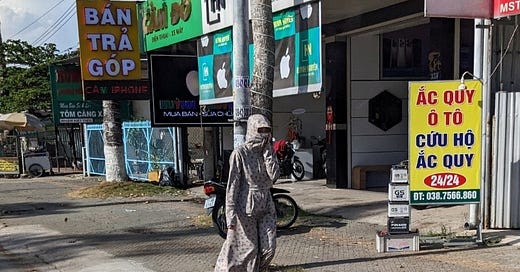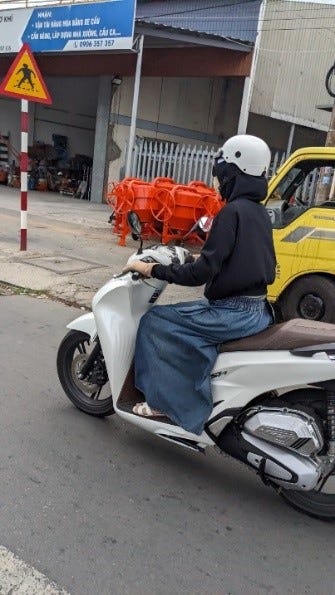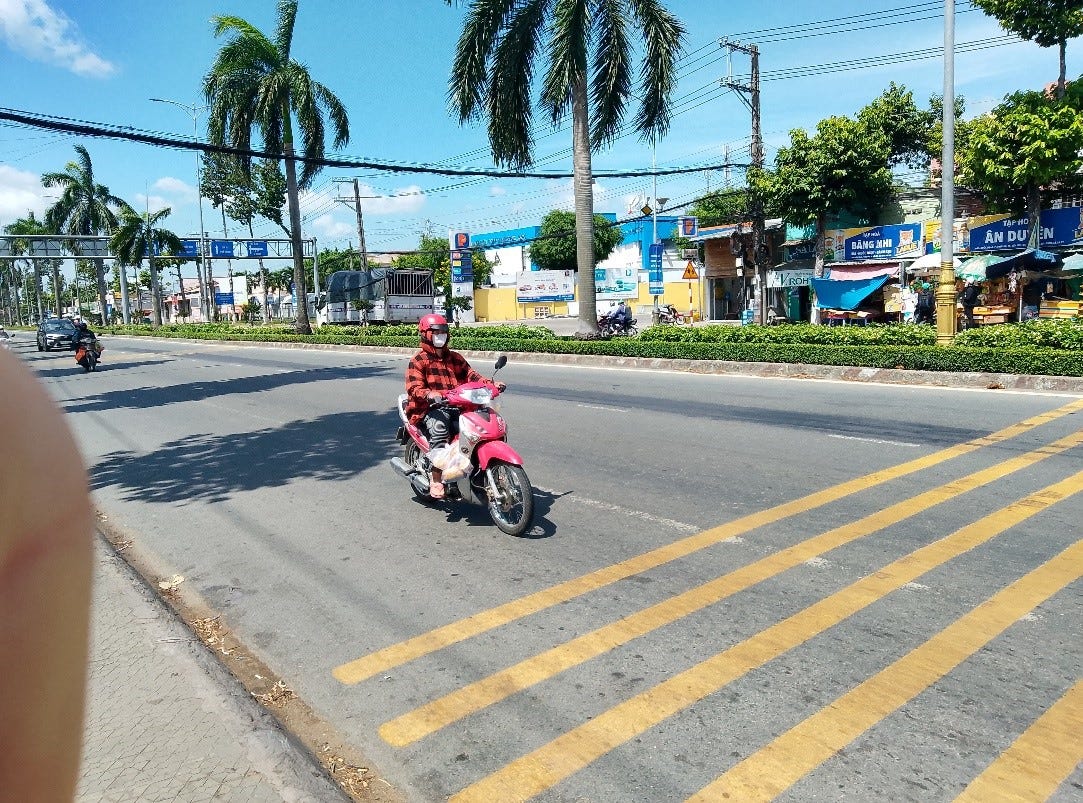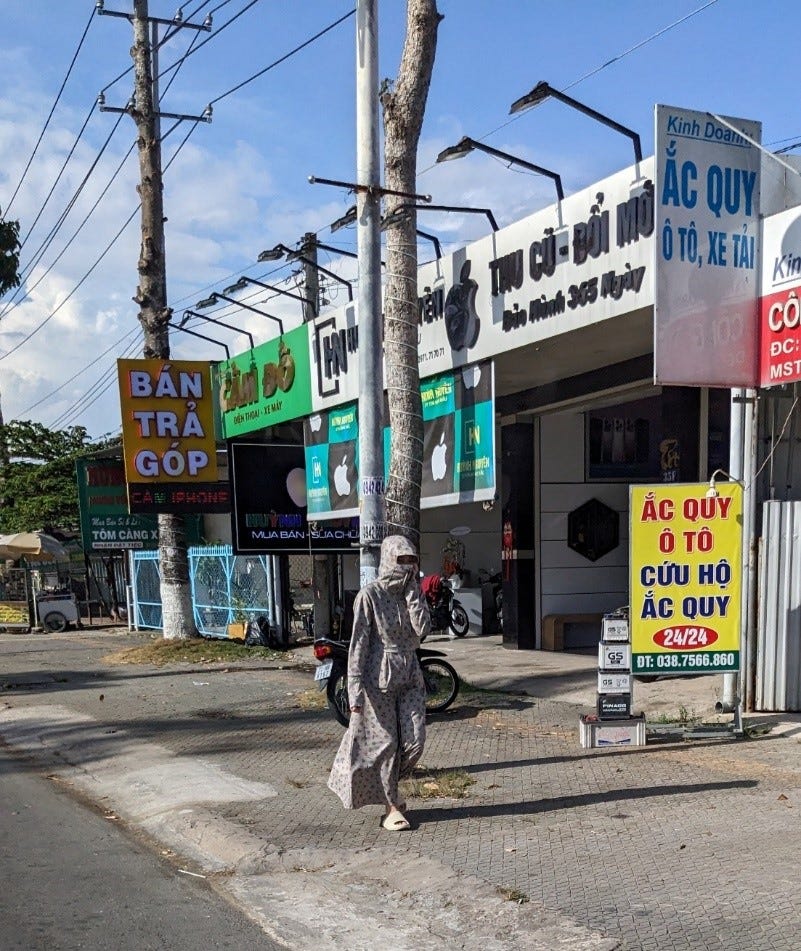Down in the Mekong Delta of Southern Vietnam, as elsewhere in Indochina, for the lady vampires who walk the land, it matters not at all if the thermometer’s at 100-plus degrees, which it often is.
If the sun’s out, they’re covered head to toe, just like the most chaste Taliban bride one could imagine.
Related: The State of Feminism in Southeast Asia
They even wear little oven mitts over their hands.
But it’s not about religion.
What’s it about is skin tone, and keeping that as light as possible so as not to misconstrued as a peasant.
Via The Diplomat (emphasis added):
“There is a deeply rooted cultural norm involved… skin color and beauty. In many societies, and especially in Asia, dark skin has long been associated with working in the fields and, therefore, rural poverty. On the other hand, pale skin is associated with living a more comfortable, cosmopolitan life indoors, out of the sun. Skin color is thus a sign of social class…
This preference for white skin is reinforced via the media: television, magazines, and billboards. Pharmacies stock an array of skin-whitening creams; some even promise to lighten the color of the most intimate body areas, such as nipples or armpits.”
Sometimes the various parts of the ensemble vaguely match.
Usually not, though.
This deeply engrained cultural preference for light skin as an indicator of status is taken purely at face value in Asia and — contrary to what some Social Justice™ hyena would claim — was long before the white man washed up on the Oriental shores.
Related: Existential Angst in 'Nam (50 Years Late)
No controversy whatsoever results from the norm.
The only attempt to gin up controversy in a region unfamiliar with Western leftist racial doctrine, in fact, comes from the Western anti-white corporate media.
Via Travel Noire (emphasis added):
“Colonialism has also left its mark on the beauty standards in Asian countries. Many nations across the continent were once colonized by white powers from the US and Europe. Eventually, their fair skin signified the power and affluence of the colonizers. Even in Japan, which remained uncolonized, noblewomen during the Edo period adopted white makeup to emulate the luxurious image associated with lighter skin. These historical factors continue to shape modern beauty standards in Asia…
The ingrained Eurocentric beauty ideals, stemming from class distinctions and colonialism, continue to influence societal norms in Asia. While the preference for pale skin remains prevalent in many Asian countries, the tide is slowly turning as new standards of beauty gain momentum. The potential for change is palpable. It will take a collective effort to deconstruct these discriminatory beauty norms and foster a society that celebrates inclusivity and the beauty of all skin tones.”
But what else would one expect from ideologically captured urchins who chalk literally every social phenomenon up to racism enacted by the white devil?
Given that the sun hasn’t touched these women’s skin in years, their vitamin D levels have to be in the tank.
Ben Bartee is an independent Bangkok-based American journalist with opposable thumbs.
Follow AP on X.
Subscribe (for free) to Armageddon Prose and dystopian sister travel blog, Armageddon Safari.
Support independent journalism with a one-off, hassle-free "digital coffee" tip.
Bitcoin public address: bc1qvq4hgnx3eu09e0m2kk5uanxnm8ljfmpefwhaw






